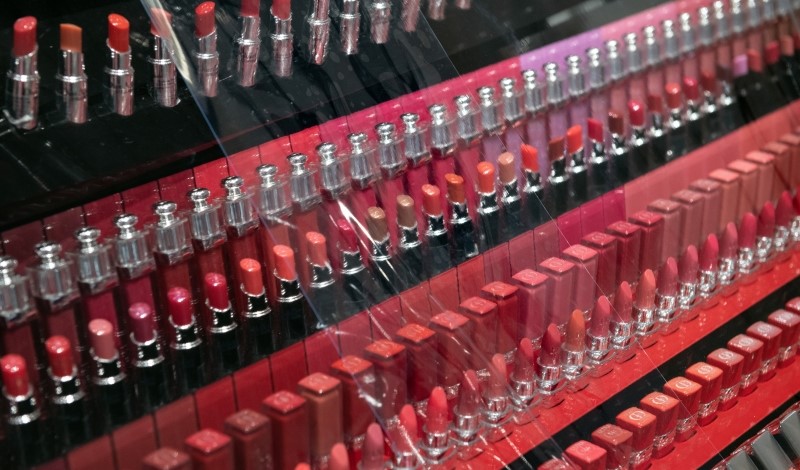
Scholar calls for regulators to correct the dangers of inadequate cosmetics regulations for women of color.
The authority of the U.S. Food and Drug Administration (FDA) to regulate cosmetics expanded with the passage of The Modernization of Cosmetics Regulation Act of 2022 (MoCRA), but cosmetic regulations have remained the subject of public discussion.
A recent class action lawsuit, with over 8,000 class members, is pending against the manufacturers of allegedly defective hair-relaxing products—creams and lotions designed to straighten chemically hair. These products reportedly contain toxic chemicals that are known to increase the risks of developing uterine and ovarian cancer, especially in Black women. FDA has not yet banned these chemicals from being used in hair products.
To address the harms that products such as hair relaxers may have on people of color, one scholar recommends that FDA adopt a new approach to regulating health products and cosmetics.
In a recent article, Colleen Campbell of Hofstra University’s Maurice A. Deane School of Law contends that the ineffective regulation of certain drugs and cosmetics indicates the need for an “intersectional approach” to food and drug law. She urges regulators to combat the disproportionate harm to women by understanding and repairing their systemic ignorance of the health risks facing women of color affected by food and drug regulation.
When regulatory systems fail to consider the issues women face, Campbell argues, the burden of that failure falls hardest on women of color. Campbell focuses on the impact of insufficient FDA regulations on Black women in particular.
She cites FDA’s slow and inadequate response to the harms caused by the Dalkon Shield Intra-Uterine Device, which had a design defect that caused at least 21 deaths and 13,000 cases of sterility or infertility in its users. Campbell notes that the Dalkon Shield was in circulation from 1970 to 1974, yet FDA reportedly did not issue a recall on the device until 1984.
Campbell argues that defects in the Dalkon Shield, coupled with FDA’s inaction, had a disproportionate impact on Black women. The Dalkon Shield acted as a contraceptive by irritating the uterine lining, she explains. Black women are especially prone to developing certain reproductive health issues—such as uterine fibroids, endometriosis, and cancer—and uterine irritation can exacerbate these conditions.
Campbell focuses on cosmetics as her principal example of how inadequate regulations have a disproportionate impact minority communities. For example, she explores the unsuccessful regulation of skin lightening products.
Even though FDA limits the presence of harmful ingredients, such as hydroquinone and mercury, in skin lightening products, Campbell argues that its measures fall short. MoCRA expanded FDA’s authority to regulate cosmetics by allowing the agency to create requirements for manufacturers in the cosmetics industry, issue recalls, and access cosmetic product records, but MoCRA does not allow FDA to review cosmetics before they enter the market.
As further evidence of FDA’s insufficient measures, Campbell cites a study released by the New York State Department of Health that found high levels of mercury exposure in Afro-Caribbean residents attributable “primarily” to the use of skin lightening products. She notes that this finding is “not surprising” because skin lightening products are used often in these communities and often contain mercury at concentrations that exceed FDA limits.
To correct past regulatory failures, Campbell argues that regulators should take an intersectional approach to regulating health products without taking on the “patriarchal endeavor” of “regulating specific beauty regimes” within communities of color.
An intersectional approach to regulating cosmetics would require FDA to “prioritize the most vulnerable groups,” such as “economically marginalized women of color,” who are the most frequent users of cheaper adulterated products that can be toxic or fail to comply with manufacturing standards.
Campbell recommends greater enforcement of existing regulations that limit chemicals in skin lightening products against non-compliant manufacturers, but she does not endorse a total ban of the products. A total ban, she explains, would be “overbroad” and encourage the “overregulation of communities that are already oversurveilled” by authorities by placing the burden of a product ban on consumers and communities.
Turning to regulatory changes, Campbell concedes that imposing stricter regulatory standards for toxic chemicals in cosmetics may be ineffective in creating actual change, but she argues that even “symbolic acts” taken by regulators can still help underserved populations. Even if a new regulation fails to produce a tangible effect, she explains, the act of putting forth a new regulation can express to the public “whose lives matter and are prioritized within the law.”
Campbell notes that the Cosmetic Safety for Communities of Color and Professional Salon Workers Act of 2021—a recent bill introduced in the U.S. House of Representatives—could promote an intersectional, race- and class-conscious approach to food and drug law. If passed, the bill would subsidize research that examines the adverse effects of cosmetics marketed to women of color and salon employees.
The bill would also create a “permanent advisory committee” that would engage women of color and salon workers to advise FDA on how to replace the harmful chemicals in the cosmetics marketed to minority communities.
Although it is unclear whether this bill will pass, Campbell argues that the bill exemplifies the changes needed to regulate the health of women of color. The bill, and others like it, could “enhance agencies’ accountability and expand democratic access to agencies,” by incorporating the perspectives of communities of color and centering policy conversations on the health of women of color.



